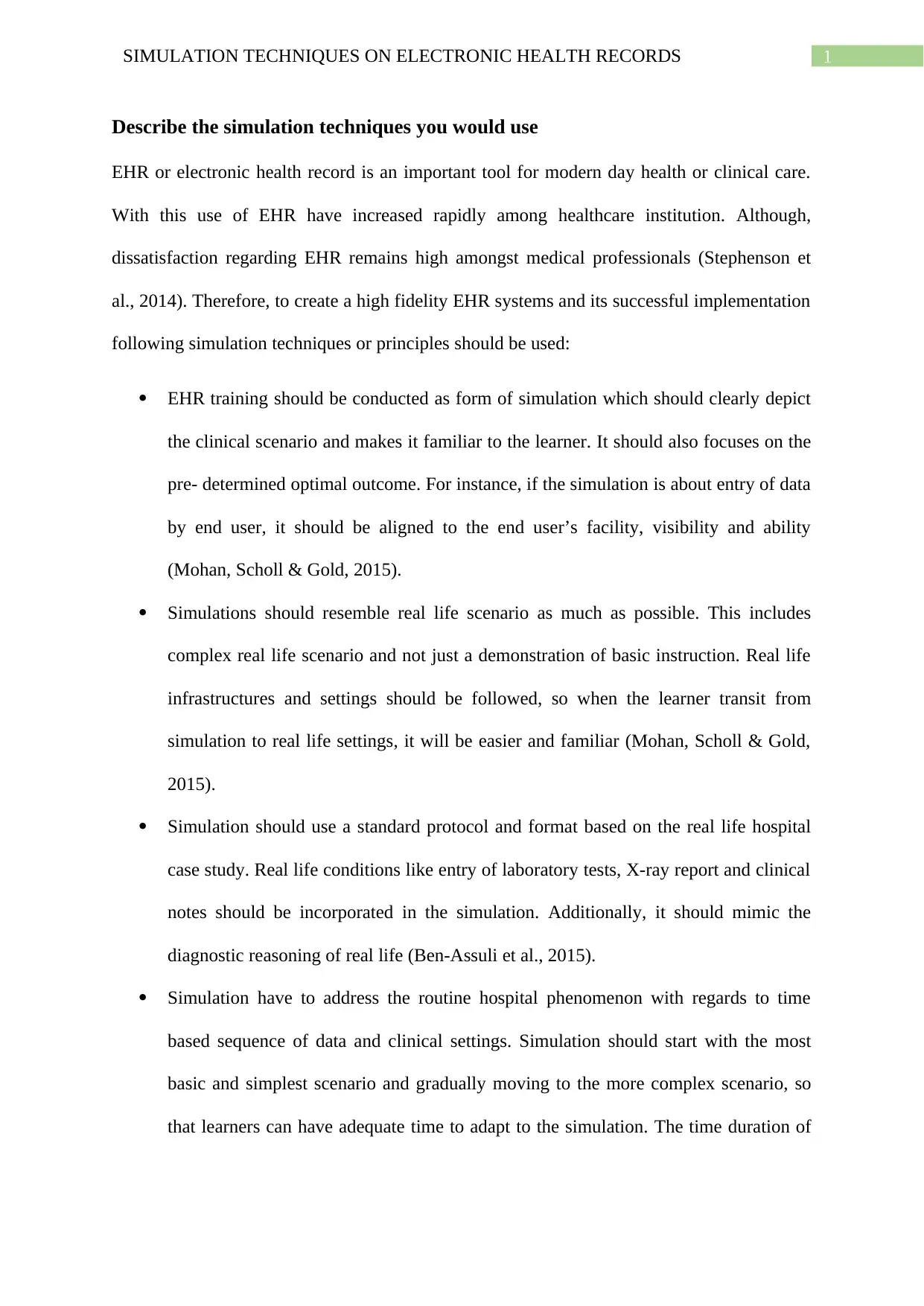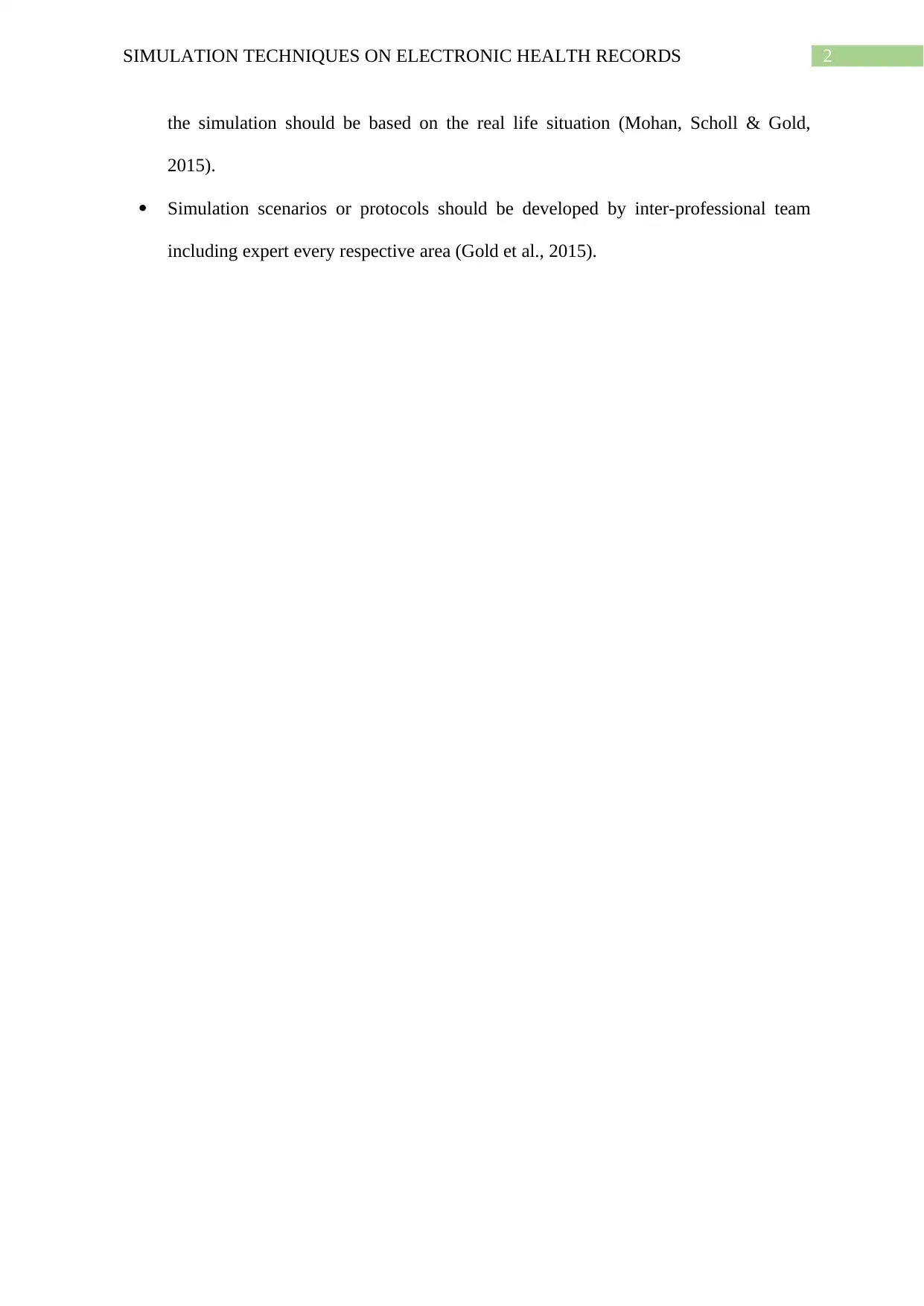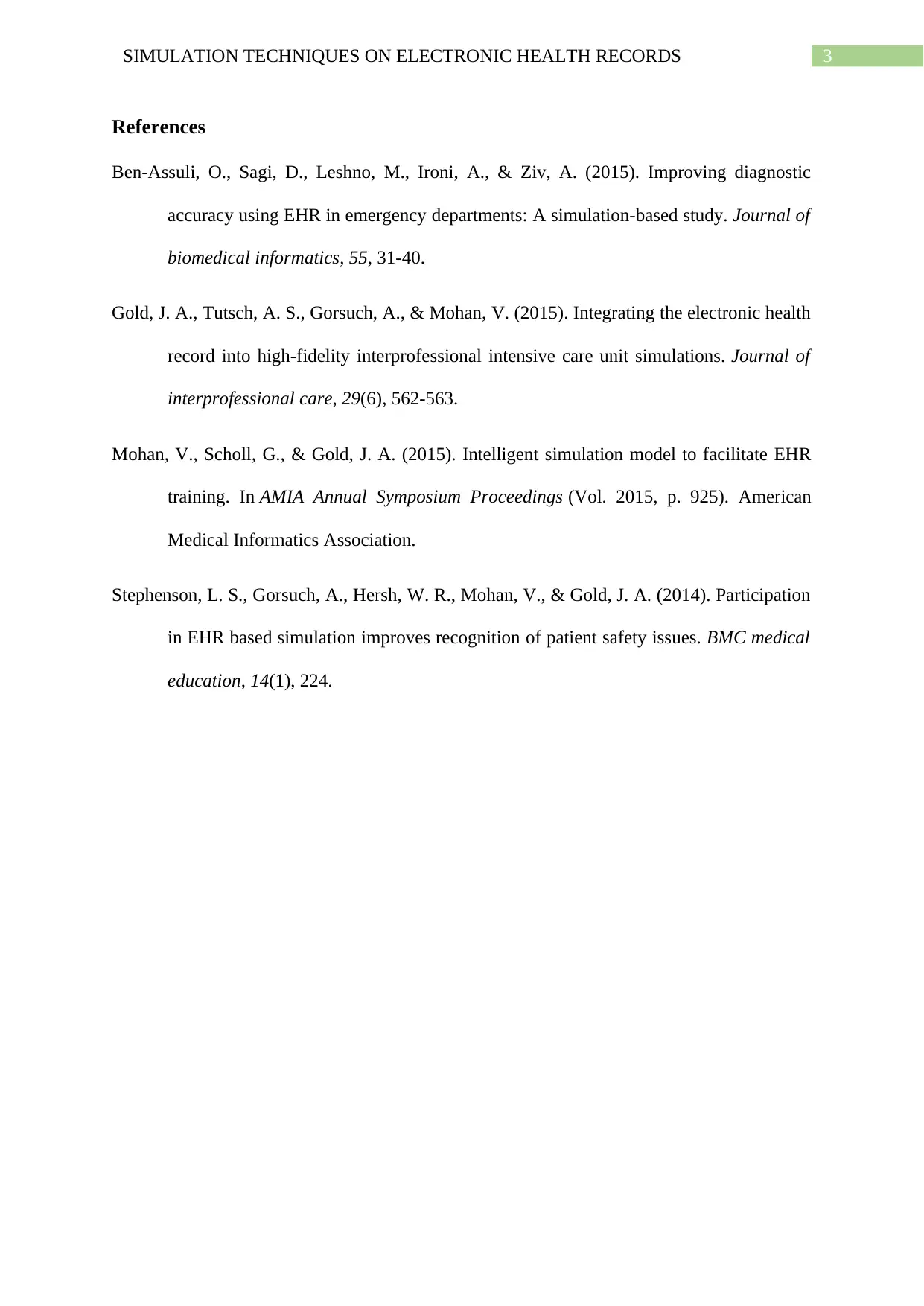Applying Simulation Techniques to Optimize Electronic Health Records
VerifiedAdded on 2023/05/30
|4
|618
|360
Report
AI Summary
This report discusses the application of simulation techniques to enhance the effectiveness of Electronic Health Record (EHR) systems in modern healthcare. It addresses the prevalent dissatisfaction among medical professionals regarding EHR implementation and proposes using simulation to create high-fidelity EHR systems. Key simulation techniques include realistic EHR training that mirrors clinical scenarios, using real-life settings and infrastructures, adhering to standard protocols based on real hospital case studies, and addressing routine hospital phenomena with time-based data sequences. The simulation should progress from basic to complex scenarios, allowing learners adequate adaptation time. Developed by an inter-professional team, these simulations aim to improve EHR usability, patient safety, and overall satisfaction among healthcare providers.
1 out of 4





![[object Object]](/_next/static/media/star-bottom.7253800d.svg)